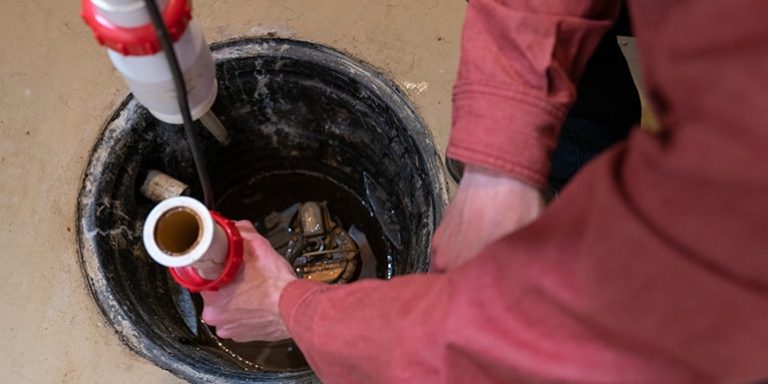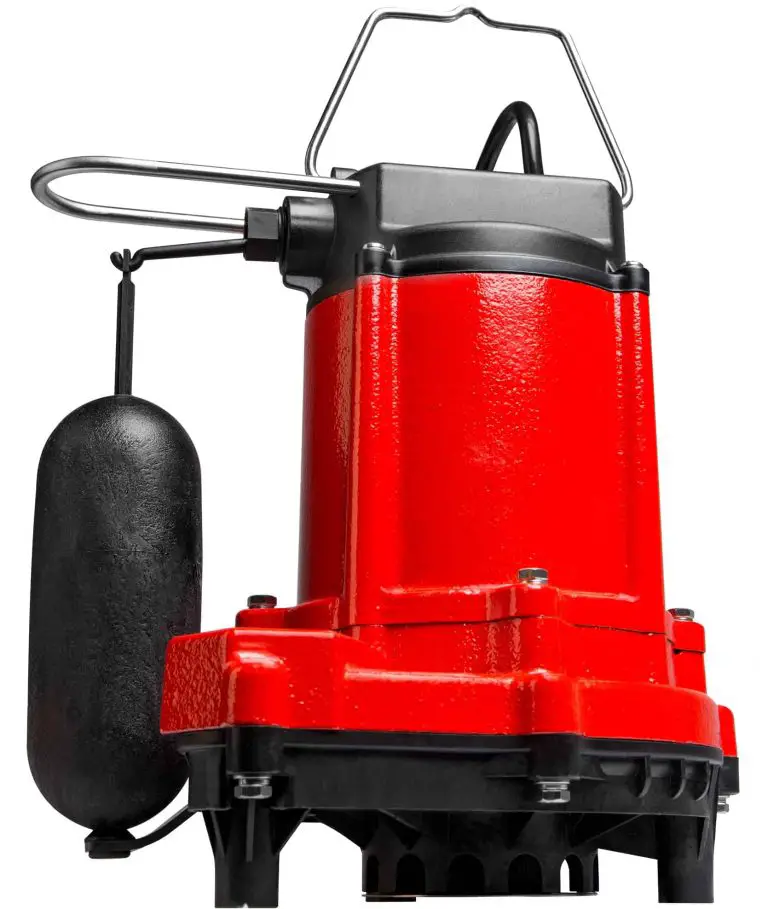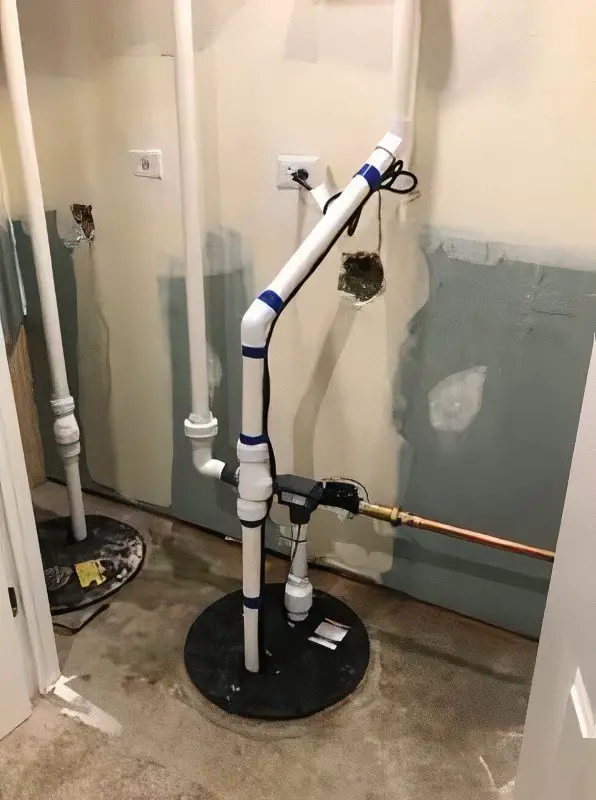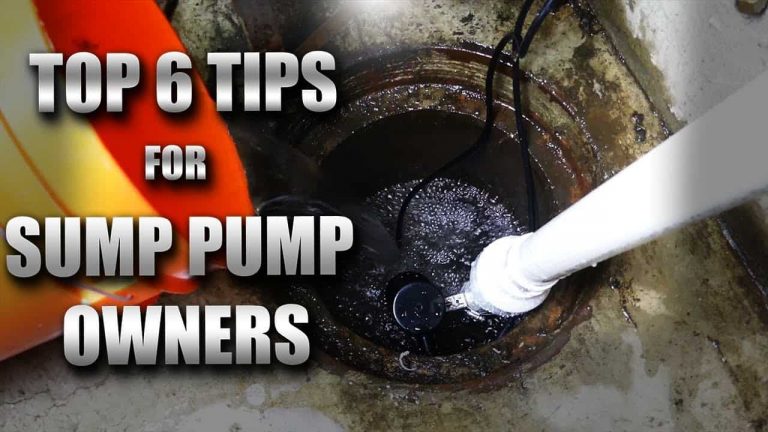Can a Sump Pump Drain into the Street
A sump pump is a device that is installed in the basement of a home. Its purpose is to remove water that has accumulated in the sump pit and to discharge it away from the house. A sump pump can be powered by electricity or by a battery.
If there is a power outage, the battery will take over and continue to operate the pump. Some municipalities have ordinances that prohibit discharging water from a sump pump into the street.
If your home is prone to flooding, you may be considering installing a sump pump. But can a sump pump drain into the street?
The answer is yes, but there are some things you need to know first.
Check with your local municipality to see if there are any regulations or permits required. You’ll also want to make sure that your sump pump discharge pipe is large enough to handle the water flow.
A sump pump discharge pipe should be at least 2 inches in diameter and should be sloped so that it drains away from your home.
Be sure to direct the water away from any trees, shrubs, or other plants that could be damaged by the high water flow. And always keep an eye on the discharge pipe to make sure it’s not blocked or frozen.
With a little planning and care, draining your sump pump into the street can be a safe and effective way to protect your home from flooding.
How To Properly Discharge A Sump Pump – Milton DE
Sump Pump Drainage Laws
Most people are familiar with sump pumps, as they are commonly used in homes to protect against flooding. However, not everyone is aware of the laws and regulations surrounding sump pump drainage. In this blog post, we will provide an overview of the most important things to know about sump pump drainage laws.
There are two main types of sump pumps: submersible and pedestal. Submersible pumps are located entirely within the sump pit, while pedestal pumps are mounted on a platform above the pit. Both types of pumps work by pumping water out of the pit and away from the foundation of the home.
Sump pump drainage must be directed away from the home in order to avoid foundation damage or flooding. It is important to note that simply discharging the water onto your property is not sufficient – it must be discharged at least 10 feet away from the foundation in order to be effective. There are a few different ways to achieve this, such as using a French drain or connecting to an existing underground drainage system.
If you live in an area with high groundwater levels, it is especially important to make sure that your sump pump discharge is properly directed. This is because if water is allowed to pool around your foundation, it can put undue stress on your home’s structure and lead to serious problems down the road. Consulting with a professional before installing your sump pump can help ensure that you are following all applicable laws and regulations regarding its placement and discharge configuration.
Where to Run Sump Pump Discharge
If you have a sump pump in your basement, you know that it’s important to have proper drainage for the discharge. Otherwise, your basement can flood when the pump kicks on. So where should you run the discharge pipe?
There are a few things to consider when deciding where to drain your sump pump. First, you need to make sure the discharge pipe is draining away from your home. You don’t want water running back towards your foundation or seeping into your basement.
Second, you need to make sure the discharge pipe won’t cause any flooding problems for your neighbors. The last thing you want is for your sump pump to be responsible for someone else’s flooded basement!
Finally, you need to make sure the discharge pipe won’t freeze in winter weather.
If it does freeze, it could burst and cause even more flooding problems.
The best place to run a sump pump discharge is usually out through the side of your house and into a storm sewer or catch basin. This will ensure that water is drained away from your home and won’t cause any flooding problems for anyone else.
Just be sure to keep an eye on the pipe in winter and clear any snow or ice buildup so it doesn’t freeze over.
Can Sump Pump Drain into Storm Sewer
Most homes in the United States are equipped with a sump pump. A sump pump is used to remove water that has accumulated in a sump basin, typically located in the basement of a home. The water is typically pumped out of the basin and away from the home.
Some homeowners may wonder if they can drain their sump pump into a storm sewer.
The answer to this question depends on your municipality’s regulations. Some municipalities allow homeowners to drain their sump pumps into the storm sewer, while others do not.
It is important to check with your local municipality to see what is allowed before draining your sump pump into the storm sewer.
There are some advantages to draining your sump pump into the storm sewer. One advantage is that it can help reduce flooding in your basement during heavy rains.
Another advantage is that it can help reduce the amount of water that enters the municipal sewer system during periods of heavy rain or snowmelt.
However, there are also some disadvantages to draining your sump pump into the storm sewer. One disadvantage is that it can increase flood risks for other properties downstream from your home if there is a blockage in the storm sewer system.
Additionally, any pollutants or chemicals in your sump water will be discharged into the environment when you drain your sump pump into the storm sewer. For these reasons, it is important to weigh both the advantages and disadvantages of this practice before deciding whether or not to do it at your home.
Can Sump Pump Drain into Sewer Line
If you have a sump pump in your basement, you may be wondering if you can drain the water from it into your sewer line. The answer is yes, but there are a few things to keep in mind. First, check with your local municipality to see if there are any restrictions or requirements for doing this.
Second, make sure that your sump pump discharge hose is properly secured and will not leak. Third, be aware that draining your sump pump into the sewer line could increase the risk of sewage backup in your home. If you have any concerns, it is best to consult with a professional before proceeding.
Can Sump Pump Drain into Floor Drain
If your home is flooding, you may be wondering if you can drain your sump pump into your floor drain. The answer is maybe. It depends on the type of sump pump you have and the capacity of your floor drain.
If you have a submersible sump pump, then draining it into your floor drain is not recommended. This is because the pump is not designed to work with standing water and could become damaged.
However, if you have a pedestal sump pump, then draining it into your floor drain may be an option.
You will need to check the capacity of your floor drain to make sure it can handle the influx of water. You may also need to use a longer hose to reach from the pump to the drain.
In general, it is best to avoid draining your sump pump into a floor drain unless absolutely necessary.
If possible, direct the water outside away from any foundation walls or other areas that could be damaged by flooding.
Sump Pump Discharge Overflow
If you live in an area with a high water table, or if your basement is prone to flooding, you may have a sump pump installed to help keep your basement dry. A sump pump works by pumping water out of your basement and into an underground drainage system or, in some cases, into the street.
However, even the best sump pumps can’t always keep up with heavy rains or rapid melting of snow and ice.
If the water level in your sump pit rises too high, it can cause your sump pump to “overflow.” An overflow can damage your home’s foundation and lead to flooding in your basement.
To avoid an overflow, make sure that you regularly check the level of water in your sump pit and clean it out as needed.
You should also invest in a backup power source for your sump pump so that it will continue to operate even if there is a power outage.
How Far Can You Run a Sump Pump Discharge Line
If your home is located in an area that has a high water table, you may have to deal with flooding in your basement from time to time. To help combat this, you can install a sump pump. A sump pump is a device that pumps water out of your basement and away from your home.
One question you may have is how far can you run a sump pump discharge line? The answer depends on a few factors, including the size of your sump pump, the capacity of the discharge line, and the slope of the ground around your home.
The size of your sump pump will dictate the maximum distance that you can run the discharge line.
Most standard sump pumps have a 1/2 horsepower motor and can move up to 50 gallons per minute. This means that they can move water up to 25 feet vertically or 100 feet horizontally. If you have a larger sump pump, it may be able to move water even further.
The capacity of the discharge line also plays a role in how far you can run it. Most homes are equipped with 3/4-inch diameter pipes, which have a maximum capacity of 45 gallons per minute. This means that even if your sump pump is capable of moving more water, the pipe may not be able to handle it all and could overflow.
It’s always best to err on the side of caution and keep the length of your discharge line shorter rather than longer.
Finally, the slope of the ground around your home will also impact how far you can run the discharge line. If there is too much slope, gravity will pull the water back down towards your home instead of away from it.
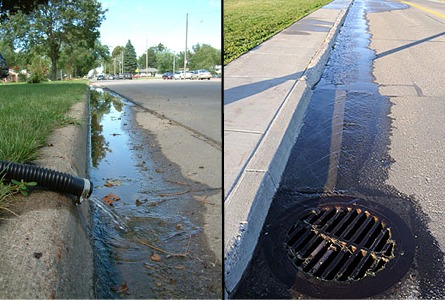
Credit: csinewsnow.com
Can You Discharge a Sump Pump to the Street?
It’s a common question – can you discharge your sump pump to the street? The answer is maybe, but it depends on a few things. First, you’ll need to check with your city or town to see if there are any ordinances that prohibit such discharge.
Some cities have rules about what can and cannot be discharged into the sewer system, so it’s always best to check first. If there are no local ordinances prohibiting discharge, then you’ll need to consider the type of sump pump you have. Submersible pumps are designed to be submerged in water, so they can handle being discharged into a sewage system.
However, pedestal pumps are not designed for this purpose and could be damaged by being discharged into a sewer line. So, if you have a pedestal pump, it’s best to consult with a professional before discharging into the sewer system. Finally, even if your city allows discharge and your pump is able to handle it, you’ll need to make sure that the outlet pipe is properly sized and installed so that there is no backflow or flooding.
Improperly installed or maintained pipes can cause sewage backflow which can contaminate your home and create health hazards. If you’re unsure about whether or not your pipe is properly installed, it’s best to consult with a professional before discharging into the sewer system.
Where Should the Sump Pump Drain To?
If your home is prone to flooding or has a basement, you may have a sump pump. This device helps to pump water out of your home and away from the foundation to prevent flooding and water damage. But where should the sump pump drain to?
The most important thing is that the sump pump drains away from your home. If it drains too close, the water could just seep back into your basement. The best place for it to drain is into a storm sewer or dry well.
A storm sewer is a system of pipes that carries runoff from rain and melted snow away from your property. It’s usually located in the street in front of your home. Check with your municipality to see if there’s one available for you to use.
A dry well is a pit that’s filled with gravel or coarse sand. Water drains into it and then percolates through the ground, eventually making its way back into groundwater reserves. You can dig one yourself, but it’s best to consult with an expert first so you know how big it needs to be and what type of soil you have (which will affect how quickly water drains).
Can You Pump Rain Water into the Street?
In short, the answer is no. You cannot pump rain water into the street.
The process of stormwater runoff begins when rainfall hits impermeable surfaces like rooftops, driveways, and sidewalks.
The water then flows through a system of gutters and downspouts that lead it to a storm drain. From there, the water is eventually discharged into a nearby body of water.
If you were to try to pump rain water into the street, it would quickly overwhelm the storm sewer system and cause flooding.
Additionally, pumping rain water into the street would be a violation of your city’s municipal code. So, it’s best to just let nature take its course when it comes to stormwater runoff.
Can a Sump Pump Drain Outside?
A sump pump is a device that is used to remove water that has accumulated in a sump pit. The water is typically pumped out of the pit and into an area where it will no longer cause problems. A sump pump can be used to drain water from outside as well, but there are some things to consider before doing this.
The most important thing to keep in mind is that you need to make sure the discharge pipe from the sump pump is not going to cause any flooding or other problems. It is also important to make sure the discharge pipe is located above the level of the ground so that any water that does accumulate will flow back into the pit and not out onto your property. If you have any concerns about this, it is best to consult with a professional before proceeding.
Another thing to consider when using a sump pump to drain water from outside is what will happen if there is a power outage. If your sump pump runs on electricity, then it will not work during a power outage unless you have a backup generator. If you do not have a backup generator, then you need to be sure that the discharge pipe from the sump pump is high enough off of the ground so that gravity can still pull the water down and away from your property even without power.
Overall, using a sump pump to drain water from outside can be done safely as long as you take some precautions and plan ahead. Be sure to consult with a professional if you have any questions or concerns before proceeding.
Conclusion
If your sump pump drains into the street, it’s likely that you’re in violation of a city ordinance. Draining your sump pump into the street can cause flooding and other problems for your neighbors. It’s best to consult with a professional to find out the best way to drain your sump pump.


